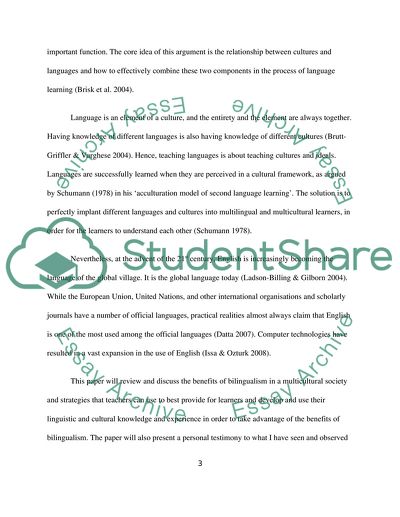Cite this document
(Being Bilingual: The Challenges and Opportunities of Bilingual Essay, n.d.)
Being Bilingual: The Challenges and Opportunities of Bilingual Essay. Retrieved from https://studentshare.org/education/1733394-bilingualism-and-education-the-classroom-and-the-school-context
Being Bilingual: The Challenges and Opportunities of Bilingual Essay. Retrieved from https://studentshare.org/education/1733394-bilingualism-and-education-the-classroom-and-the-school-context
(Being Bilingual: The Challenges and Opportunities of Bilingual Essay)
Being Bilingual: The Challenges and Opportunities of Bilingual Essay. https://studentshare.org/education/1733394-bilingualism-and-education-the-classroom-and-the-school-context.
Being Bilingual: The Challenges and Opportunities of Bilingual Essay. https://studentshare.org/education/1733394-bilingualism-and-education-the-classroom-and-the-school-context.
“Being Bilingual: The Challenges and Opportunities of Bilingual Essay”, n.d. https://studentshare.org/education/1733394-bilingualism-and-education-the-classroom-and-the-school-context.


